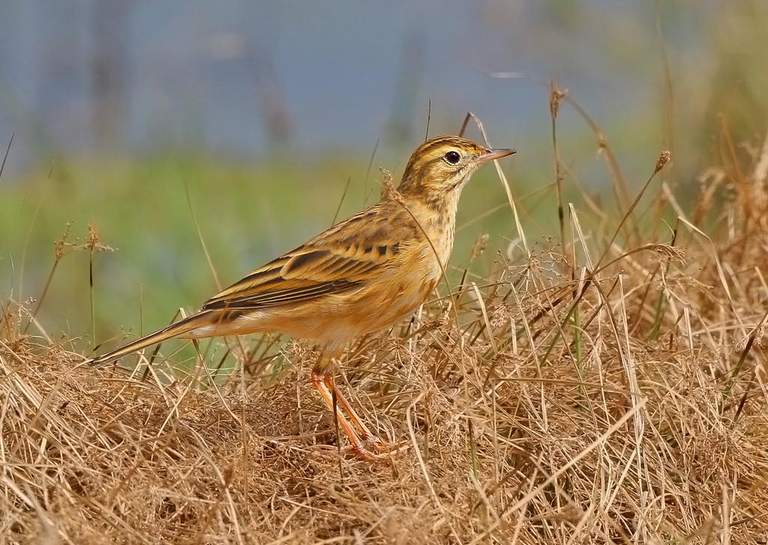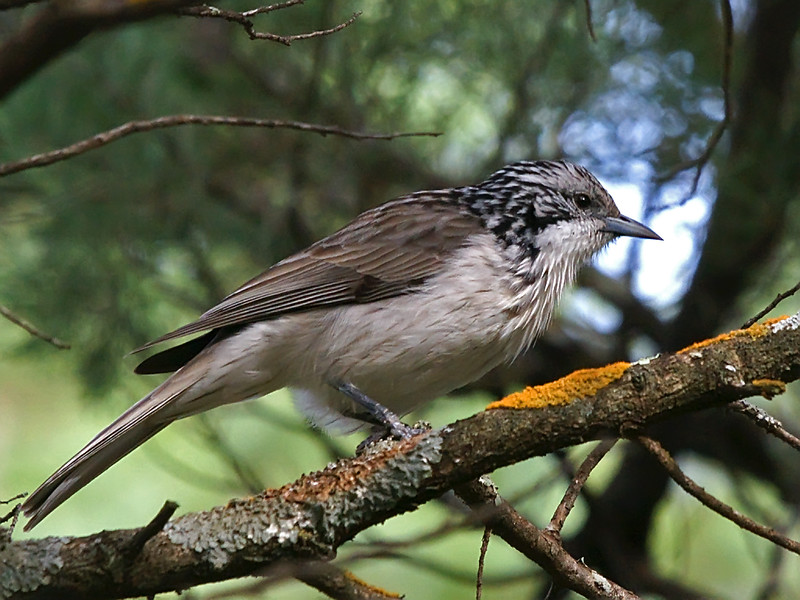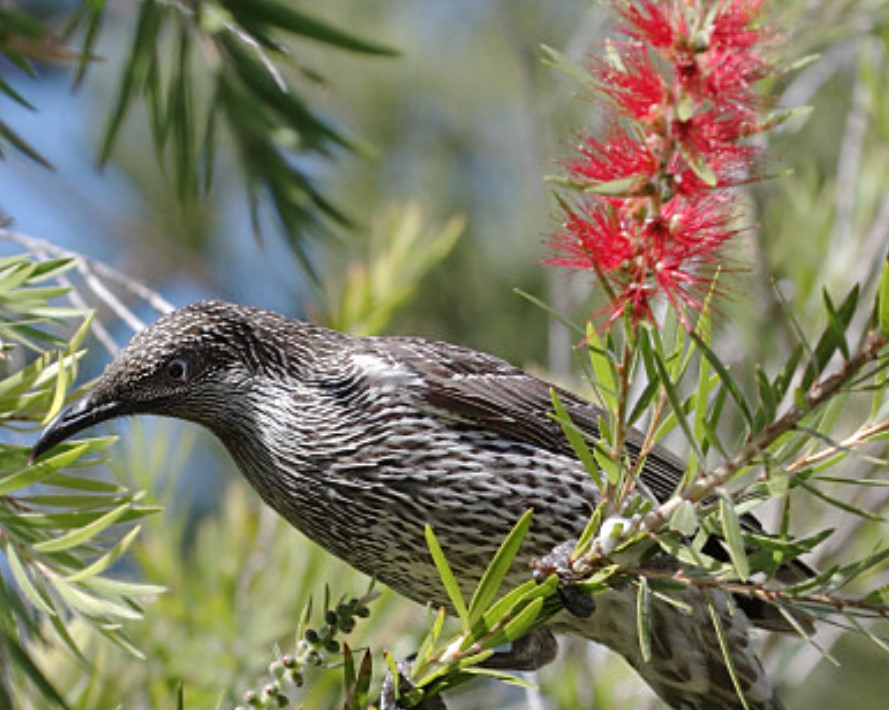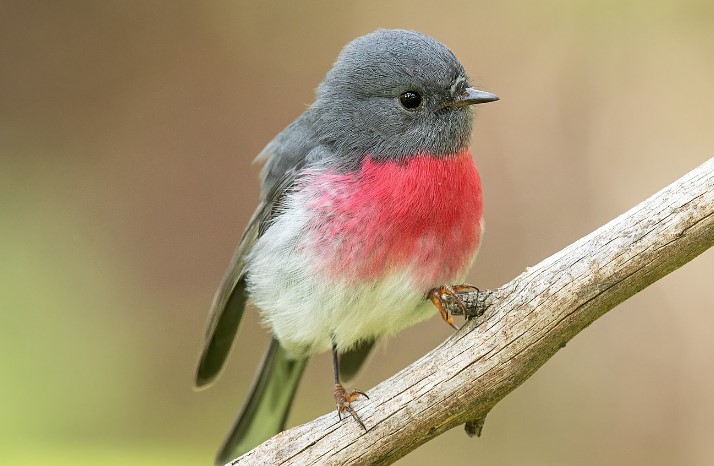Family: Richard’s Pipit (Anthus richardi) belongs to the family Motacillidae in the order Passeriformes.
Habitat: Richard’s Pipit resembles a lark, the result of converging adaptation to similar ecological niches. They both have dull brown bodies with black streaks over their backs, and their tails have white flashes. In addition, both live in open country, where the pipit occupies a wide variety of habitats. The habitats range from wet heath-lands and pastures to arid shrub steppes, samphire, beaches, and grassy clearings in woodlands.
It is preferable to have bare ground interspersed with spare cover patches. A deeper understanding of pipits and larks’ structure reveals that they share superficial similarities. In the young, pipits are simply dully marked on the upper parts rather than ‘scaled’ as young larks are. Their legs are long and trim, with a conventional syringx or voice box and conventionally scaled tarsi. Its habits also differ from larks, which ranges from Africa and Eurasia to Australia and New Zealand.
Regardless of the climate, it can be found across Australia, from Tasmania to Arnhem Land, at sea level to Mt Kosciusko. For breeding, they often form pairs with close territories. Unlike larks, males display and advertise with a song flight-but its form differs. Their sweet, quavering trill is audible at the bottom of each dip, accompanied by their flight from a low vantage point. They swoop and rise, each dip accompanied by their quavering dives. A sudden dive to the ground ends the flight.
Perched on rocks, stumps, and bushes, males also trill. Richard’s Pipits vary little in their plumage tones across Australia despite the variety of climates in which they live. In the northwest, only those on the coastal plains differ, being smaller and darker with more black spots on the back and breast.
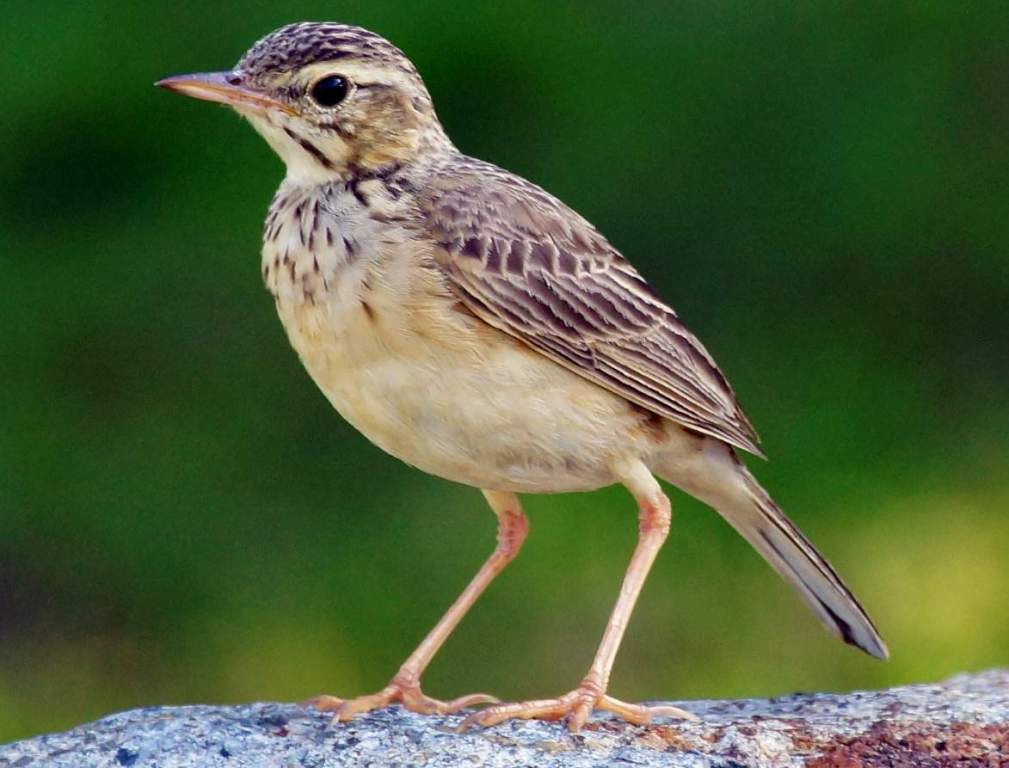
Diet: In addition to running along the ground to feed, it darts here and there to catch grasshoppers, ants, caterpillars, beetles, and other insects. Occasionally, it picks seeds from leaves, clumps of plants, rock crevices, and the ground. Frequently it stops to perch on low stones or vantage projections, resulting in jerky gait. This is done by teetering the tail up and down as wagtails do. When alarmed, it flies to the top of a bush, bare branch, or fence post.
Identification: Both sexes are similar. The upper parts are mottled brown, with dusky-centered, cream-edged feathers. Cream-colored brows and a malar stripe flank white, dusky-lined cheeks. Flight feathers and tail are dark brown, the outermost tail feathers are white. The underparts are cream-white, speckled with dusky across the breast. The eyes are brown. Bills and feet are horn-flesh. The immature is little duller.
Vocalizations: Richard’s Pipit call is a thin tswee or sparrow-like chirrup. However, the song is Trilled Peer in Flight.
Migration: Newly cleared ground is quickly colonized by it. It is neither migratory nor nomadic, despite this. Some Tasmanian birds migrate to the mainland for the winter, but not all. During the winter, Snowy Mountain birds descend to lower elevations, but most flock together in loose groups of up to 100.
Nest & Breed: Nesting and breeding occur in August-January. Nests in a depression in the ground, built into a shallow cup with grass, other plant materials, and sometimes hair. Often sheltered by a tussock, shrub, stone, or wood. The female incubates while the male stands guard nearby; both feed on the young.
Flight: During flight, the tail is often fanned, flashing white sides at the bottom of each undulation. It eats, sleeps, and nests on the ground.
Eggs & Incubations: Richard’s Pipit lays 2 to 4 eggs, off-white to light brown, spotted and clouded with dark grey and brown; tapered-oval, about 23 x 17 mm. The incubation period is 13-14 days for females. The nestling period is 13-14 days.
Alternative Name: It is also known as the Australian Pipit and the Ground Lark.
Size: Richard’s Pipit is about 160-180 mm long.
Diet: Like other pipits, this species is insectivorous. It mainly consumes flying insects.
Distribution: Richard’s Pipit is found in open country throughout Australia. Widespread across Africa and Asia, as well as New Guinea and New Zealand.
Races: There are about 25 races; two in Australia.
Read More – Pechora Pipit (Anthus gustavi)
